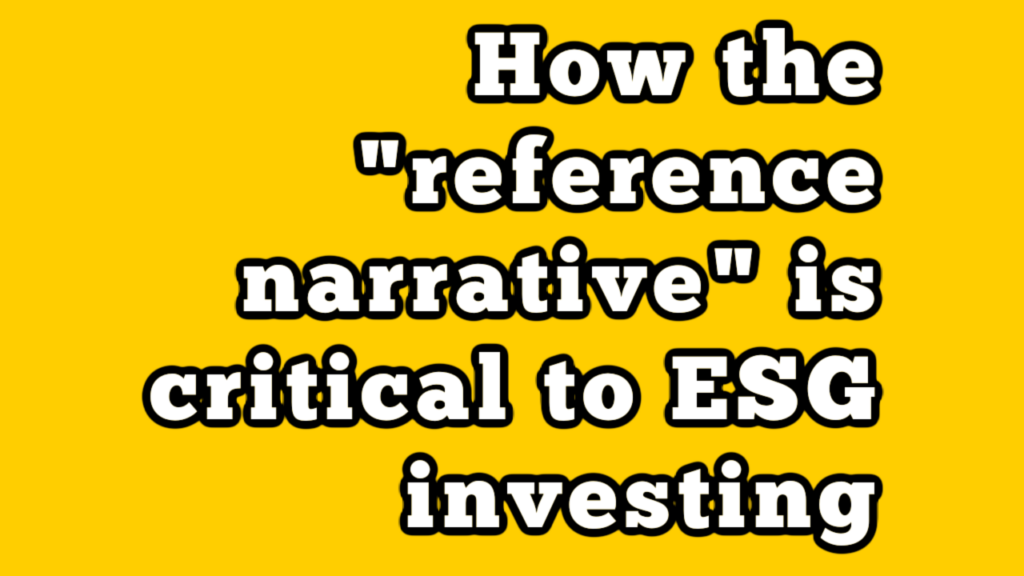How the “reference narrative” is critical to ESG investing

Here’s a note from Harald Walkate:
I’ve been doing some reading (& listening) on climate change and reflecting on takeaways for investors. I think there’s good news and not so good news. The good news: most investors have put climate change on the agenda: considering climate investment risk & how to contribute to solutions, joining industry initiatives, engaging with energy companies, etc.
The not so good news is that many of these investor initiatives appear to be based on the wrong reference narrative. (What’s a ‘reference narrative’? See below).
In short, there appear to be 2 different narratives:
1. Markets-led transition: the transition will be shaped mostly by market forces and voluntary corporate & investor action
2. Policy-led transition: the transition will be shaped mostly by government policyAs Kay & King indicate below, how you assess risks, but also how you engage, how you design policies, whether you decide to divest, all depends on which reference narrative you subscribe to. And your reference narrative may need updating from time to time. And there is more good news: the books on my pile paint a clear picture of the Why, How and Who of climate change: not only *why* we need to act, but also *how* we should act and –most importantly- *who* should act. And so provide a good indication of which narrative is most realistic, and most worth referencing.
So if you’re involved in climate change as it relates to investment, this pile is highly recommended (I might even say required) reading. But if you want the 30-minute summary, happy to help, and feel free to reach out.
Reference narratives: In Radical Uncertainty, John Kay and Mervyn King say: “We believe the best way to understand attitudes to risk is through the concept of a reference narrative, a story which is an expression of our realistic expectations. Since different people start with different reference narratives, the same risk may be assessed by different people in different ways. We change the reference narrative in response to disconfirming events, but infrequently and discontinuously.”
